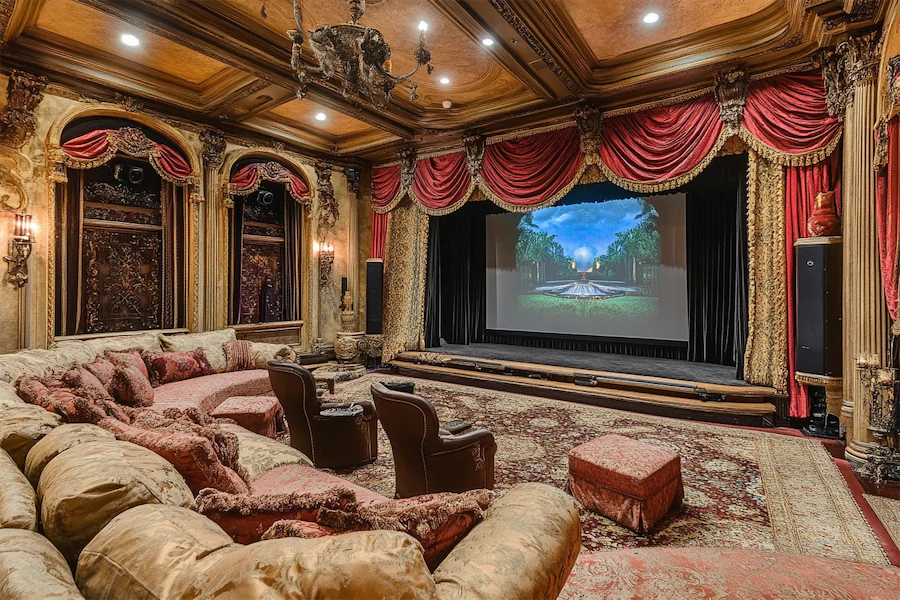Designing a Baroque entertainment room involves embracing the opulence and grandeur characteristic of the Baroque period, which flourished in Europe during the 17th and early 18th centuries. Here’s a comprehensive guide to understanding and creating such a space:
Introduction to Baroque Entertainment Rooms
A Baroque entertainment room exudes luxury and drama, featuring elaborate details, rich textures, and bold colors. This style transforms a functional space into a lavish setting reminiscent of grand European palaces.
History and Origins of the Baroque Style
The Baroque style emerged in late 16th-century Europe, particularly in Italy, as a response to the Renaissance’s emphasis on harmony and proportion. It sought to evoke emotion and grandeur through intricate designs, dynamic forms, and dramatic contrasts. Baroque architecture and interior design are noted for their elaborate ornamentation, bold colors, and the use of luxurious materials.
Key Features of Baroque Entertainment Rooms
- Ornate Furniture: Incorporate pieces with intricate carvings, gilded accents, and luxurious upholstery. Curved lines and elaborate details are quintessential.
- Rich Color Palette: Utilize deep reds, royal blues, and golds to create a sumptuous atmosphere. These colors add to the dramatic flair of the Baroque style.
- Luxurious Textiles: Employ heavy draperies, velvet, and brocade fabrics to enhance the room’s opulence. These materials contribute to the rich texture characteristic of Baroque interiors.
- Elaborate Moldings and Ceilings: Feature decorative plasterwork, ceiling frescoes, or gilded moldings to add depth and interest. Such details are central to Baroque design, emphasizing grandeur and intricacy.
- Dramatic Lighting: Incorporate grand chandeliers and candelabras to provide both illumination and decorative appeal. Lighting plays a crucial role in highlighting the room’s ornate features.
Applications of Baroque Style in Entertainment Rooms
- Entertainment Centers: Select cabinetry with Baroque detailing, such as gilded carvings and ornate handles, to house modern entertainment systems. This blend of old and new creates a harmonious balance between technology and classic design.
- Seating Arrangements: Opt for plush sofas and chairs with rich upholstery and decorative trims to provide comfort while maintaining aesthetic integrity. The furniture should reflect the opulence of the Baroque period.
- Decorative Accents: Incorporate mirrors with gilded frames, classical sculptures, and elaborate wall art to enhance the room’s grandeur. These elements contribute to the overall lavishness of the space.
Considerations When Designing a Baroque Entertainment Room
- Space and Scale: Ensure the room is spacious enough to accommodate large, ornate furniture without appearing cluttered. Baroque design thrives in open spaces that allow each element to stand out.
- Balance: While opulence is key, maintain a cohesive look by balancing elaborate pieces with more subdued elements to prevent overwhelming the senses. This balance ensures the room remains inviting and functional.
- Integration of Modern Technology: Thoughtfully incorporate modern entertainment systems in a way that complements the Baroque aesthetic, such as concealing equipment within ornate cabinetry. This approach preserves the room’s historical ambiance while providing contemporary functionality.
Conclusion
A Baroque entertainment room offers a unique blend of historical grandeur and modern comfort. By focusing on ornate details, rich materials, and dramatic design elements, you can create a space that serves as both a luxurious retreat and a functional entertainment area.
